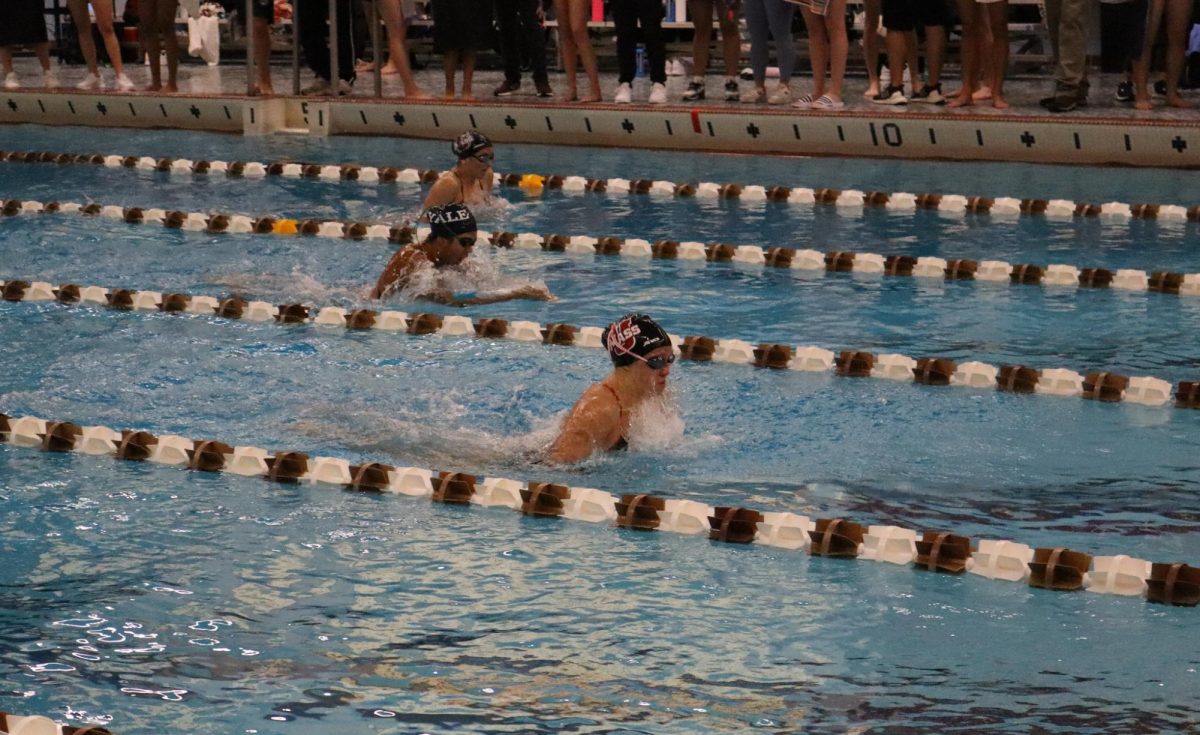On Tuesday, Feb. 27, Dr. Ira Helfand presented a lecture titled “The Growing Danger of Nuclear War and What We Can Do to Prevent It” hosted by the Ellsberg Initiative for Peace and Democracy (EIPAD) at the University of Massachusetts.
Helfand is a nuclear abolitionist, physician and the activist-in-residence for EIPAD. In 2017, Helfand was the recipient of the 2017 Nobel Peace Prize and has written about the health of nuclear weapons in leading medical journals, including the New England Journal of Medicine.
Helfand explained the current danger of nuclear warfare, the disastrous effects of nuclear weapons and why the public should adamantly oppose both.
EIPAD was founded in honor of Daniel Ellsberg, a political activist and whistleblower who leaked the Pentagon Papers. According to Helfand, nuclear weapons were “unquestionably” Ellsberg’s main concern.
Christian G. Appy, history professor and the director of the EIPAD, played a major role in facilitating the activist-in-residence series. The Ellsberg activist-in-residence will come to campus for a week to give a public lecture and public workshop, visit classes and meet informally with students and faculty.
“We, as an initiative, want not only to raise public awareness and scholarship on the issues that were really important to the life and legacy of Daniel Ellsberg, but to encourage students to do something about the problems that he devoted his life to,” Appy said.
Helfand is concerned with informing the public on how much nuclear weapons have changed over the past few decades.
“The most important thing you need to know about Hiroshima and Nagasaki is that they do not begin to prepare us for what will happen if nuclear weapons are used today,” Helfand said.
Dr. Helfand discussed the predicted effects of nuclear weapons, which include total disaster, famine and climate disruption.
Using the model of a single explosion — seventeen hundred times the force of Hiroshima — Helfand said “Within one thousandth of a second of the detonation of this bomb, a fireball would form, reaching out for two miles in every direction, four miles across. Within this area, everything would be vaporized. The buildings, the trees, the people.”
Helfand identified multiple geopolitical flashpoints that put the world at risk of nuclear conflict: the Russian invasion of Ukraine, relations between the United States and China, North Korea and tensions between India and Pakistan, which is the situation he worries about “the most.”
The three other risk factors he noted are the emergence of cyber technology and thus cyber terrorism, the climate crisis and the possible reelection of Donald Trump.
He advocated the nuclear-policy changes proposed by Back from the Brink, an anti-nuclear-weapon grassroots coalition based in the U.S.
Back from the Brink has outlined four main policy goals as necessary means towards eradicating nuclear weapons. They are as follows: ensure that the U.S. never fires nuclear weapons first, end the president’s unchecked access to nuclear weapons, take the weapons off hair-trigger alerts to reduce the risk of impulsive decisions and cyberattacks and abandon plans to enhance the nuclear arsenal.
Helfand and Appy both regard nuclear weapons as the dominating crisis humankind is facing.
“This is the most pressing existential crisis,” Appy said.
Helfand argued that the public’s reaction during the Cold War kickstarted anti-nuclear-weapon action by the government. He thinks we need that same public outrage today, and that we must take inspiration from past successes. For example, over 50,000 warheads have already been dismantled since the apex of the Cold War.
In the summer of 1983, the U.S. had missiles positioned in West Germany with a mere six-minute flight time to Moscow, and in autumn of that year, we twice came “this close to having nuclear war.” In under two years, however, Presidents Reagan and Gorbachev reached an agreement, bringing “a complete and one hundred eighty-degree change in the nuclear policy of both countries.”
Helfand referenced the 1983 television movie “The Day After,” which had a massive effect on popular culture awareness regarding nuclear weapons. Helfand said that the director of “The Day After” Nicholas Meyer has been attempting to organize a modern-day remake of the production for the past nine years to raise public awareness on the current nuclear situation.
“Unfortunately, when the Cold War ended, the awareness, the fear about the Cold War, essentially vanished,” Helfand said. “We dodged a bullet. We weren’t going to have a nuclear war. The nightmare was over.”
Helfand says that it is a “somewhat desperate situation.”
“Students have demonstrated that when they are aware of an existential threat like the climate crisis, they take action,” Helfand said. “And that action has been extremely important in moving us to the degree that we have moved in the climate crisis. They need to understand that the nuclear threat is every bit as great and existential threat, it is in some way a more imminent existential threat because it could happen overnight.”
The nuclear weapons crisis shows greater potential for change than climate change. Removing the weapons from the nine countries that possess them is less challenging than creating world-wide solutions to changing temperatures.
Helfand noted two upsides to the current dilemma. First, the elimination of nuclear weapons is “relatively easy” when compared to the climate crisis, according to Helfand.
“Even in times that seem very bleak, change can be possible,” Appy said, referencing Helfand’s lecture.
When asked about the mobilization of U.S. elites, Helfand noted how the possession of nuclear weapons has been used to bully time and again, but that this doesn’t equate to actual security. He noted the “false equation between power, strength and safety.”
Julia Francis is a freshman psychology and journalism major and attended the lecture for class engagement.
“I think the way he presented it was really engaging… I think it was interesting how many different aspects it covers, with like social, political, economic, all of the above,” Francis said.
Like Francis, sophomore political science student Kimani Topolski attended the lecture as an extra-credit opportunity. Topolski asked about inactive nuclear submarines and the potential environmental disaster waiting to happen.
“It was very educational in terms of, we think of Hiroshima and Nagasaki, and including the stats in numbers of how much more powerful [it would be] if we were to have it happen nowadays [nuclear warfare].” Topolski said. “It’s very fascinating and you don’t hear about it a lot.”
Francis and Topolski both said they would “definitely” recommend other students to attend.
Tuesday’s lecture will be followed by the workshop “What Activists Can Do to Prevent Nuclear War,” on Thursday, Feb. 29 at 7 p.m..
When asked about his hopes for students, Appy said “[that] students will feel inspired despite all the horrible news of our times, inspired to do something together to try to make for a better future.”
Charlotte Ribe can be reached at [email protected]. Alexandra Rowe can be reached at [email protected].



















